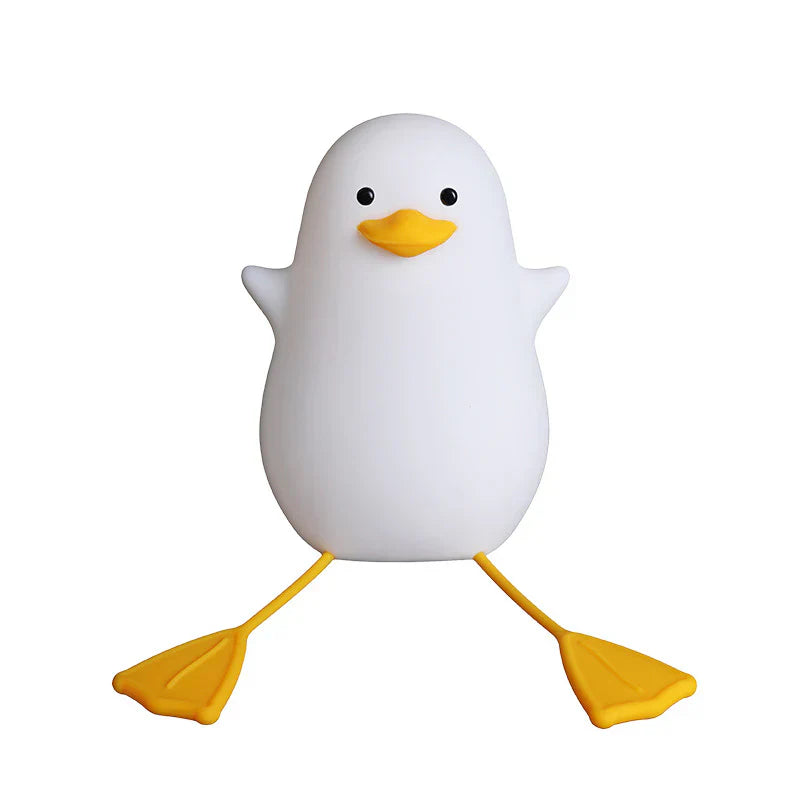In modern home lighting, LED night lights have become a popular choice for bedrooms, nurseries, hallways, and bedside areas. Though compact in size, these lights play a crucial role in nighttime comfort and safety. Beyond their cute designs and convenience, their power efficiency, heat performance, and lifespan are the true indicators of quality.
This article explores the technical foundations of LED night light performance, analyzing their energy consumption, thermal control, and longevity — to help you choose a product that’s both safe and efficient.
1. Power Consumption: Energy Efficiency That Makes a Difference
One of the biggest advantages of LED night lights is their exceptionally low power consumption. Unlike traditional incandescent or CFL night lights, LED models use solid-state lighting technology to achieve higher brightness with minimal wattage.
-
Typical Power Range: Most LED night lights consume only 1–5 watts, enough to softly illuminate a room while keeping electricity usage negligible.
-
Energy Savings: For lights that remain on overnight (such as hallway or nursery night lights), LEDs can reduce energy costs by up to 80–90% compared to older lighting technologies.
-
Smart Control Options: Many modern designs include timers, motion sensors, or ambient light sensors, ensuring the lamp only turns on when needed.
In short, a high-efficiency LED night light combines gentle illumination with ultra-low energy use — ideal for 24-hour comfort lighting.
2. Heat Output: The Hidden Safety Factor
Although LEDs generate far less heat than incandescent bulbs, heat management remains a key aspect of night light safety — especially when installed near soft materials such as bedding or curtains.
-
Source of Heat: Both the LED chip and power driver produce heat during operation. Without proper heat dissipation, temperatures can accumulate inside compact lamp housings.
-
Safety Risks: Poorly designed night lights may cause surface heating, leading to material discoloration or even safety hazards in close-contact areas like children’s rooms.
-
Key Design Features for Safe Operation:
-
Use of metal heat sinks or thermally conductive materials to dissipate heat efficiently;
-
Separation between the light source and the power driver to reduce localized heating;
-
Surface temperature control — quality products maintain a safe surface temperature below 40°C (104°F).
-
For night lights placed in nurseries or near sleeping areas, always choose models with cool-touch surfaces and proven thermal management designs.
3. Longevity: The Foundation of Reliability
The lifespan of an LED night light is not just a marketing number — it reflects build quality, material reliability, and power design.
-
Typical Lifespan: Many high-quality LED night lights claim 30,000–50,000 hours of use. Even with nightly operation, that equals several years — or even a decade — of continuous service.
-
Influencing Factors:
-
LED chip quality and driver stability directly determine how long the lamp can maintain consistent brightness.
-
Heat management: Higher operating temperatures accelerate light decay.
-
Switching frequency: Frequent on-off cycles can shorten driver life.
-
-
Lumen Maintenance: Premium models maintain ≥90% brightness after thousands of hours, ensuring soft, stable light output without visible dimming.
-
Low Maintenance: With solid-state design and low wattage, LED night lights require minimal upkeep — reducing replacement costs over time.
For households seeking dependable night lighting, choosing a lamp with high lumen maintenance and stable power design ensures long-term comfort and value.
4. How to Choose the Right LED Night Light
Here are some practical selection tips when buying LED night lights for home use:
-
Power and Brightness Balance — Choose 1–5W models offering warm, soft light (typically 10–50 lumens).
-
Heat Dissipation Design — Metal casings or structured ventilation ensure long-term safety.
-
Certifications and Protection — Look for overheat protection, child-safe enclosures, and proper insulation.
-
Smart Features — Timers, motion or light sensors improve energy efficiency.
-
Brand Reliability — Choose established brands offering warranty and quality assurance.
A thoughtful selection not only enhances safety but also brings a sense of peace and comfort to nighttime environments.
5. Recommended LED Night Lights
Below are several LED night lights from LEDLightsWorld, each combining energy efficiency, child-safe design, and modern aesthetics — ideal for bedrooms, nurseries, and everyday use:
| Product Name | Key Features | Link |
|---|---|---|
| 2 pcs Pack Duck Lamp LED Night Light | Rechargeable table lamp with timer, ideal for children’s rooms | View Product |
| White Bear Clock & LED Night Light | Rechargeable bear-shaped night light with built-in clock, perfect for nurseries | View Product |
| Meme Toast Bread LED Night Light | Rechargeable bread-shaped night light with timer, creative and functional | View Product |
| White Bear RGB LED Night Light (Remote Controlled) | Rechargeable bear-shaped lamp with RGB color changing and remote control | View Product |
Conclusion
A good LED night light isn’t just about illumination — it’s about safety, efficiency, and reliability. By understanding key performance metrics like power consumption, heat output, and lifespan, you can choose lighting that is gentle on both your eyes and your energy bill.
Whether used as a baby night lamp, hallway guide light, or bedside companion, the best LED night lights offer consistent brightness, cool operation, and long-lasting performance — lighting up the night with comfort and peace of mind.

